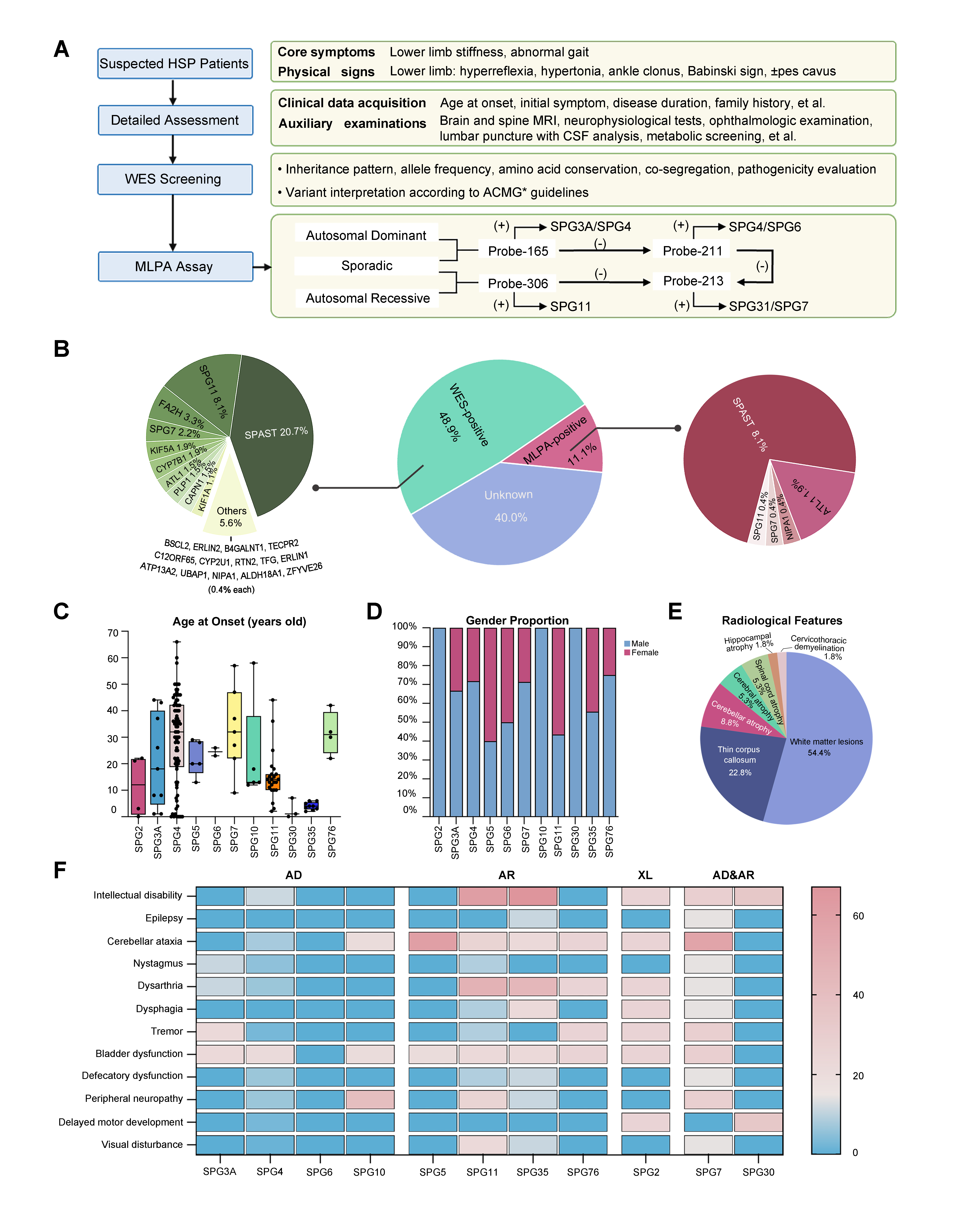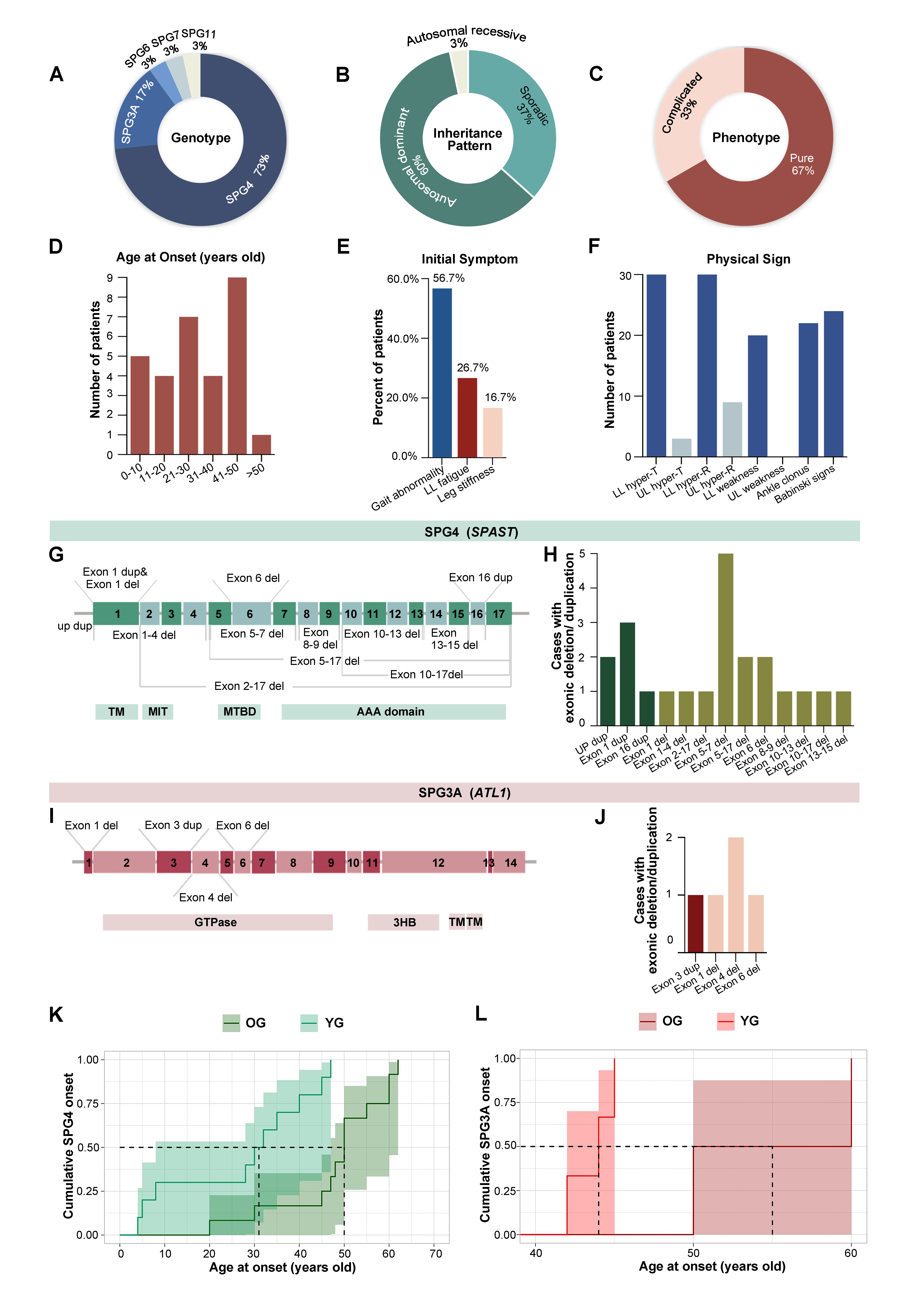Category: Spasticity
Objective: We aim to clarify the phenotype and gene spectrum of hereditary spastic paraplegia (HSP) and improve the molecular diagnosis.
Background: Next-generation sequencing-based molecular assessment has benefited the diagnosis of HSP subtypes, meanwhile, the molecular diagnosis of nearly half of HSP patients is still equivocal.
Method: A total of 270 clinically suspected HSP patients were included in this study, and multiple ligation-dependent probe amplification (MLPA) technology was used to screen large rearrangements in HSP patients who were negative for whole exome-sequencing (WES).
Results: A total of 60.0% (162/270) patients had a definite molecular diagnosis by MLPA (11.1%) combined with WES (48.9%). SPG4 was the most common subtype in patients with large rearrangements (73.3%), followed by SPG3A (16.7%), SPG6, SPG7 and SPG11 (3.3%). There were some differences in age of onset, sex ratio, phenotype and imaging characteristics across different subtypes. The three most common comorbid symptoms in complicated HSP were intellectual disability, dysarthria, and cerebellar ataxia. In addition, male predilection in some specific genotypes, notably SPG4, SPG7, SPG10, SPG2, SPG76 and SPG30 was observed, suggesting possible sex-dependent differences in expressivity and penetrance. Interestingly, we found that SPG3A patients with large rearrangements had a significantly delayed onset age (33.60±11.28 years), seemingly inconsistent with the common sense that SPG3A is almost exclusively early-onset. Of note, anticipation was a relatively common finding in SPG4 and SPG3A families with large rearrangements.
Conclusion: Large rearrangements account for a considerable proportion of all HSP, and thus, MLPA screening acts as a beneficial supplement to routine WES. This large cohort study provides a more comprehensive understanding of the clinical and genetic features of HSP.
Diagnostic flowchart and clinical profiles
Clinical and genetic spectrum of HSP
References: None.
To cite this abstract in AMA style:
YW. Cao, HR. Zheng, ZY. Zhu, L. Yao, WT. Tian, L. Cao. The Clinical and Genetic Characteristics of HSP Patients by WES Sequencing Combined with MLPA [abstract]. Mov Disord. 2024; 39 (suppl 1). https://www.mdsabstracts.org/abstract/the-clinical-and-genetic-characteristics-of-hsp-patients-by-wes-sequencing-combined-with-mlpa/. Accessed October 16, 2025.« Back to 2024 International Congress
MDS Abstracts - https://www.mdsabstracts.org/abstract/the-clinical-and-genetic-characteristics-of-hsp-patients-by-wes-sequencing-combined-with-mlpa/


